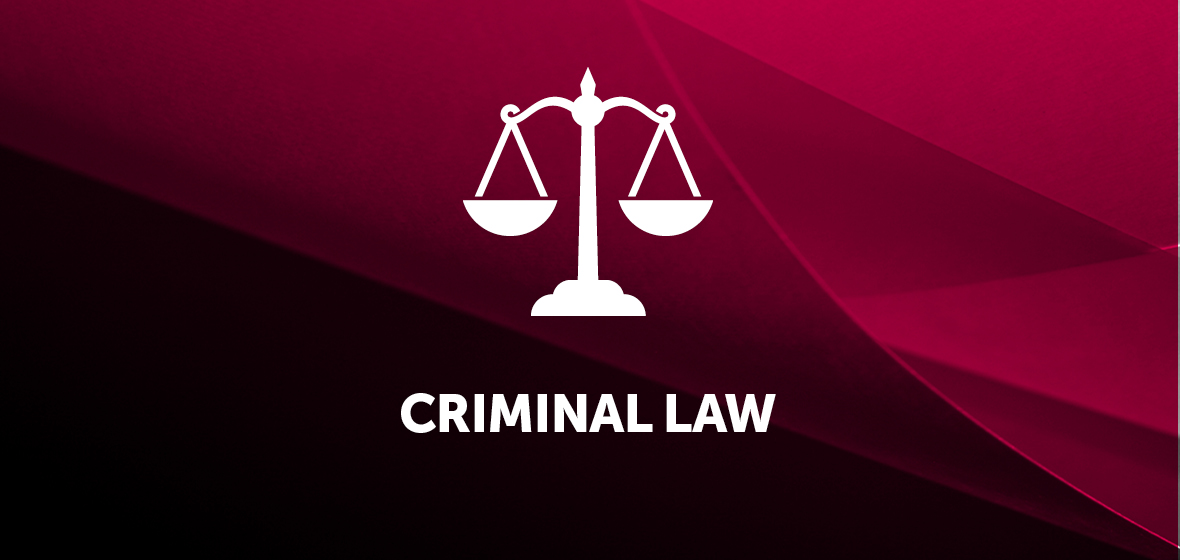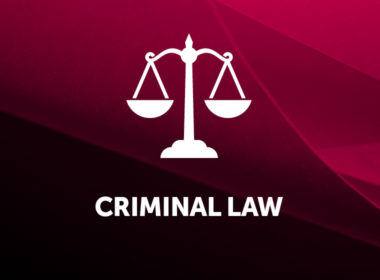Key decisions
- Hamilton v DPP [2020] NSWSC 1745
- Ilic v R [2020] NSWCCA 300
Hamilton v DPP [2020] NSWSC 1745
Sentence – committal for sentence vs committal for trial – disputed facts hearings
This decision of a single judge of the Supreme Court deals with the scenario where a defendant agrees that they have committed the offence charged, but disagrees about the particulars of the allegation. It determines that the question of whether the defendant should be committed for sentence (with a disputed facts hearing) or committed for trial depends on whether the issue in dispute relates to an essential element or essential fact – determination of which is not always straightforward.
The plaintiff is referred to throughout the judgment as the ‘defendant’, so that’s adopted in this summary, too. He was charged with kidnapping pursuant to s 86(1) of the Crimes Act. He stopped the victim early one morning under the pretence of asking her for the time and he suggested she had dropped something. When she walked away frightened, he chased and restrained her. The victim’s version of what happened next was that the defendant said he was not going to rob her, but wanted to have sex. For his part, the defendant’s version agreed that he had restrained her, but asserted he had detained her not to have sex, but to rob her. It’s important that he was charged with the variation of s 86 which alleged that he detained the victim for advantage. However, the offence can also be committed if the victim is held with the intention of either holding them for ransom, or with the intention of committing a serious indictable offence.
During the Case Conference the defendant offered to plead to the offence under s 86(1)(b) of detaining for advantage, but upon the basis he was going to rob her. The DPP pressed its position that the ‘advantage’ sought was sexual gratification. When the matter came before the Magistrate for committal, there was therefore a dispute about whether the matter should be committed for sentence (with a disputed facts hearing about the advantage sought by the defendant), or committed for trial. The Magistrate committed the matter for trial – that is, he did not act upon the defendant’s expressed guilty plea. Accordingly, shortly after the matter landed in the District Court, the defendant appealed, seeking orders to set aside the Magistrate’s order.
The appeal came before Button J, sitting alone. His Honour crystallised the question for determination by asking (at [13]): was the ‘advantage’ an essential element or essential fact of the charge? Or was it a ‘mere’ fact?
There is a spectrum of facts relevant in a criminal case, with essential elements at one end, mere facts at the other, and ‘essential facts’ perhaps somewhere in between (at [72]). The starting point to answering the question is the construction of the offence-creating provision (at [66]). His Honour considered that given the ‘catch-all’ nature of the term ‘other advantage’ in the offence the wording of the section did not suggest that the objective intention of Parliament was that in circumstances such as this one, a trial of perhaps many weeks would be required to resolve the dispute (at [69]). After offering some examples of cases where mere facts might be elevated to essential facts because of the circumstances of the case (at [75] to [79]), his Honour concluded that there was no reason to think that the particular circumstances of this case would elevate a mere fact to the status of being an essential fact which required proof beyond reasonable doubt (at [81]).
His Honour also considered some authorities on the issue. One of those, Dean v R [2019] NSWCCA 27 (‘Dean’), was reported in these pages in March 2019. The case note was accompanied by an observation by this author that the Court of Criminal Appeal had held that a trial needs to be held where there is a dispute about the details of an element to which a defendant wished to plead guilty. That case related to a different offence, pursuant to s 33B(1)(a), of possessing a weapon with intent to commit an indictable offence. Button J considered that Dean stands for the proposition that whenever a ‘sub-offence’ is also an element of an encompassing offence on an indictment, then the sub-offence must be stated on the indictment and regarded as itself an element – as must its ‘sub-elements’ (at [95]). In other words, the ‘sub-elements’ of the ‘sub-offence’ become elements of the overarching offence (at [98]). So if, in the present case, the prosecution had alleged, not detention for an advantage, but detention with intent to commit a serious indictable offence, then it would have been necessary to specify (and prove beyond reasonable doubt) that serious indictable offence and its elements with particularity (at [96]). But because what was alleged here was detention for advantage, his Honour’s observations about sub-offences appear to be strictly obiter (see [99]).
Ultimately his Honour concluded that at least in relation to this offence, based on the statute, proof of an intention to obtain an advantage during a detention is an element of the offence, but a specific advantage is not an element that needs to be so proven (at [115] – emphasis in the original). It followed that the Magistrate’s decision was erroneous.
It follows that it is now necessary to place a gloss on the commentary that accompanied the summary of Dean in these pages in March 2019. Where the defendant wants to plead guilty to the offence as charged, but on a different basis from that which is alleged by the prosecution, then whether the defendant should be committed for trial or sentence will depend upon whether the disputed fact is an essential element or an essential fact of the particular offence charged. Where the dispute is about a ‘sub-offence’ then if the dispute cannot be resolved, a trial is necessary. In other cases (such as the present) it will be necessary to look at the statute and the other factors set out in this decision to determine whether the issue in dispute relates to an essential element or essential fact. This is an important question, because if the defendant is committed for trial the maximum discount is reduced from 25 per cent to 10 per cent. Unfortunately, there is no mechanism by which this question can be resolved in the Local Court under the current legislation; that may mean that this needs the attention of Parliament.
Ilic v R [2020] NSWCCA 300
Sentence – Commonwealth matters – Form 1 vs s 16BA schedule
The Court of Criminal Appeal (‘CCA’) (McCallum JA, Wright J agreeing; Garling J also agreeing, though for slightly different reasons) has held that Commonwealth matters are not capable of being placed on a Form 1 (as distinct from a schedule pursuant to Crimes Act 1914 (Cth) s 16BA).
The lead judgment by McCallum JA opens on a lighter-than-usual note upon which it is not possible to improve by summarising it: ‘Offenders in New South Wales can be undiscriminating as to whether they commit State or federal offences. Sometimes they do both, which complicates the sentencing task. The applicant in the present case provides a good example. On a day when he was found dealing with proceeds of crime (a State offence), he was in possession of a prohibited weapon, prohibited drugs and false identification (all State offences) but also two signal jammers (a federal offence)’ (at [1]). The sentencing judge was invited to take the Commonwealth offences into account on a Form 1. Her Honour identified that, in juridical terms, the question is whether the provisions of Pt 3 Div 3 of the Crimes (Sentencing Procedure) Act 1999 (NSW) are picked up and applied as federal law by s 68(1) or s 79 of the Judiciary Act 1903 (Cth) (at [3]). Following a tangent during which her Honour pointed out that the document we all know as ‘Form 1’ has actually been repealed and we are essentially using a zombie form (see [14]), her Honour went on to determine that although provisions like those in that division are theoretically capable of being picked up as federal law (at [32]), the Form 1 provisions are not in fact picked up by the Judiciary Act. In her Honour’s view that was for two reasons, both hinging on inconsistency with Commonwealth law. First, the prohibition under the Commonwealth law on fixing a single non-parole period in respect of both federal and State sentences (at [41]). Secondly, the intention that a Commonwealth offence should not be disposed of contrary to the determination of a Commonwealth prosecutor (at [44]). For his part, Garling J agreed with the ultimate conclusion that the provisions are not picked up, but preferred to base his opinion on the inconsistency of law between the Form 1 provisions on the one hand, and the s 16BA procedure in the Commonwealth Crimes Act 1914, on the other (at [60]-[61]).
Both the judgments (but particularly that of Garling J) described the appeal as surprising (having been raised by an offender), and openly expressed the view that no better outcome was likely when the matter was ultimately determined according to law. Nevertheless, error having been established, the matter was remitted to the District Court for resentencing.
It follows that practitioners should ensure that if there are any Commonwealth charges to be disposed of as part of a charge negotiation, those Commonwealth charges are placed on a s 16BA certificate, not on a Form 1.



